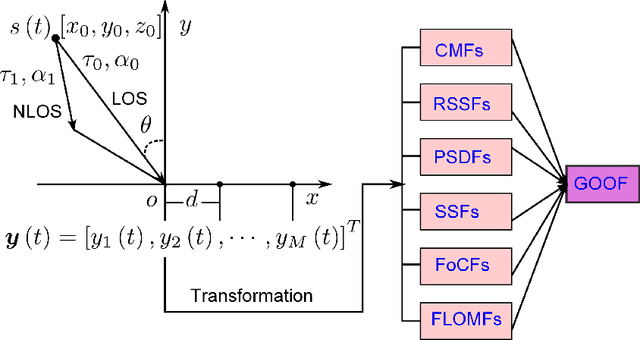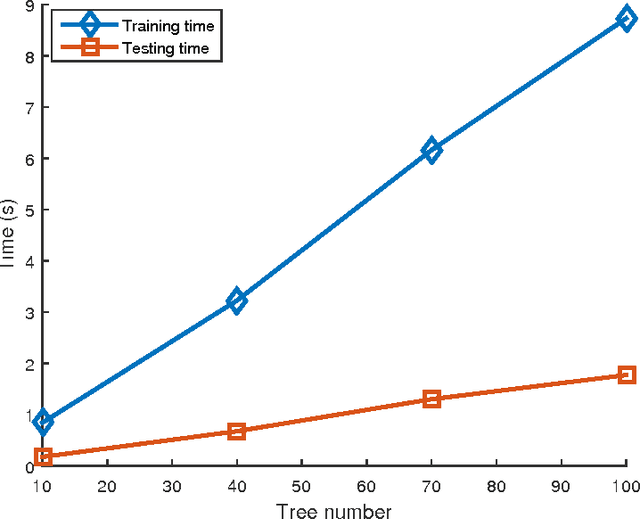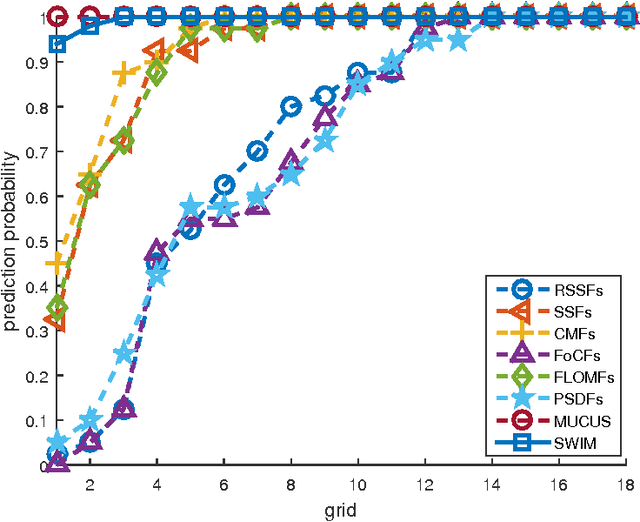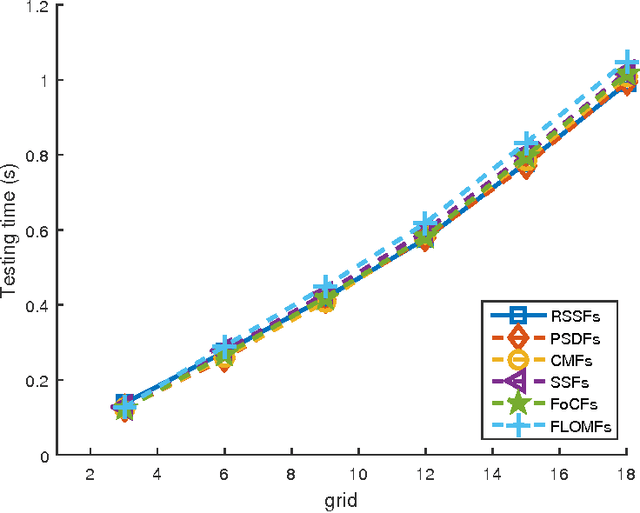Xiansheng Guo
Joint DOA and Attitude Sensing Based on Tri-Polarized Continuous Aperture Array
Oct 02, 2025Abstract:This paper investigates joint direction-of-arrival (DOA) and attitude sensing using tri-polarized continuous aperture arrays (CAPAs). By employing electromagnetic (EM) information theory, the spatially continuous received signals in tri-polarized CAPA are modeled, thereby enabling accurate DOA and attitude estimation. To facilitate subspace decomposition for continuous operators, an equivalent continuous-discrete transformation technique is developed. Moreover, both self- and cross-covariances of tri-polarized signals are exploited to construct a tri-polarized spectrum, significantly enhancing DOA estimation performance. Theoretical analyses reveal that the identifiability of attitude information fundamentally depends on the availability of prior target snapshots. Accordingly, two attitude estimation algorithms are proposed: one capable of estimating partial attitude information without prior knowledge, and the other achieving full attitude estimation when such knowledge is available. Numerical results demonstrate the feasibility and superiority of the proposed framework.
Indoor Localization Using Visible Light Via Fusion Of Multiple Classifiers
Dec 20, 2017



Abstract:A multiple classifiers fusion localization technique using received signal strengths (RSSs) of visible light is proposed, in which the proposed system transmits different intensity modulated sinusoidal signals by LEDs and the signals received by a Photo Diode (PD) placed at various grid points. First, we obtain some {\emph{approximate}} received signal strengths (RSSs) fingerprints by capturing the peaks of power spectral density (PSD) of the received signals at each given grid point. Unlike the existing RSSs based algorithms, several representative machine learning approaches are adopted to train multiple classifiers based on these RSSs fingerprints. The multiple classifiers localization estimators outperform the classical RSS-based LED localization approaches in accuracy and robustness. To further improve the localization performance, two robust fusion localization algorithms, namely, grid independent least square (GI-LS) and grid dependent least square (GD-LS), are proposed to combine the outputs of these classifiers. We also use a singular value decomposition (SVD) based LS (LS-SVD) method to mitigate the numerical stability problem when the prediction matrix is singular. Experiments conducted on intensity modulated direct detection (IM/DD) systems have demonstrated the effectiveness of the proposed algorithms. The experimental results show that the probability of having mean square positioning error (MSPE) of less than 5cm achieved by GD-LS is improved by 93.03\% and 93.15\%, respectively, as compared to those by the RSS ratio (RSSR) and RSS matching methods with the FFT length of 2000.
Localization by Fusing a Group of Fingerprints via Multiple Antennas in Indoor Environment
Dec 20, 2017



Abstract:Most existing fingerprints-based indoor localization approaches are based on some single fingerprints, such as received signal strength (RSS), channel impulse response (CIR), and signal subspace. However, the localization accuracy obtained by the single fingerprint approach is rather susceptible to the changing environment, multi-path, and non-line-of-sight (NLOS) propagation. Furthermore, building the fingerprints is a very time consuming process. In this paper, we propose a novel localization framework by Fusing A Group Of fingerprinTs (FAGOT) via multiple antennas for the indoor environment. We first build a GrOup Of Fingerprints (GOOF), which includes five different fingerprints, namely, RSS, covariance matrix, signal subspace, fractional low order moment, and fourth-order cumulant, which are obtained by different transformations of the received signals from multiple antennas in the offline stage. Then, we design a parallel GOOF multiple classifiers based on AdaBoost (GOOF-AdaBoost) to train each of these fingerprints in parallel as five strong multiple classifiers. In the online stage, we input the corresponding transformations of the real measurements into these strong classifiers to obtain independent decisions. Finally, we propose an efficient combination fusion algorithm, namely, MUltiple Classifiers mUltiple Samples (MUCUS) fusion algorithm to improve the accuracy of localization by combining the predictions of multiple classifiers with different samples. As compared with the single fingerprint approaches, the prediction probability of our proposed approach is improved significantly. The process for building fingerprints can also be reduced drastically. We demonstrate the feasibility and performance of the proposed algorithm through extensive simulations as well as via real experimental data using a Universal Software Radio Peripheral (USRP) platform with four antennas.
Indoor Localization by Fusing a Group of Fingerprints Based on Random Forests
Mar 07, 2017



Abstract:Indoor localization based on SIngle Of Fingerprint (SIOF) is rather susceptible to the changing environment, multipath, and non-line-of-sight (NLOS) propagation. Building SIOF is also a very time-consuming process. Recently, we first proposed a GrOup Of Fingerprints (GOOF) to improve the localization accuracy and reduce the burden of building fingerprints. However, the main drawback is the timeliness. In this paper, we propose a novel localization framework by Fusing A Group Of fingerprinTs (FAGOT) based on random forests. In the offline phase, we first build a GOOF from different transformations of the received signals of multiple antennas. Then, we design multiple GOOF strong classifiers based on Random Forests (GOOF-RF) by training each fingerprint in the GOOF. In the online phase, we input the corresponding transformations of the real measurements into these strong classifiers to obtain multiple independent decisions. Finally, we propose a Sliding Window aIded Mode-based (SWIM) fusion algorithm to balance the localization accuracy and time. Our proposed approaches can work better in an unknown indoor scenario. The burden of building fingerprints can also be reduced drastically. We demonstrate the performance of our algorithms through simulations and real experimental data using two Universal Software Radio Peripheral (USRP) platforms.
 Add to Chrome
Add to Chrome Add to Firefox
Add to Firefox Add to Edge
Add to Edge